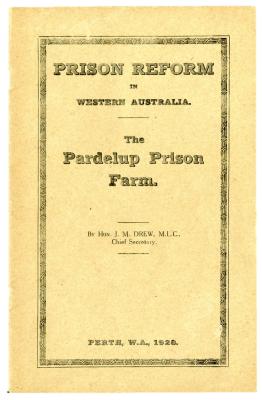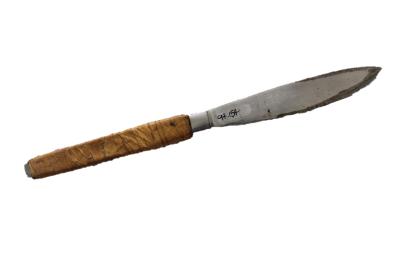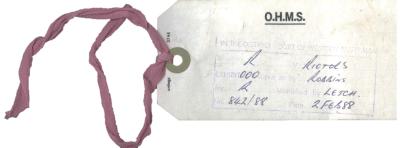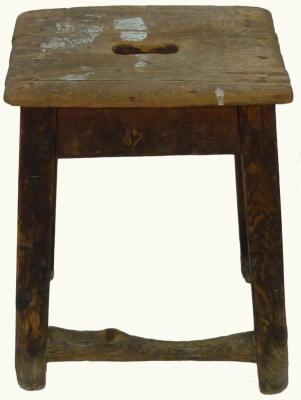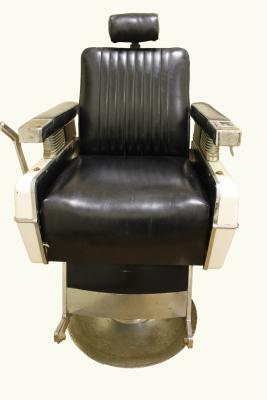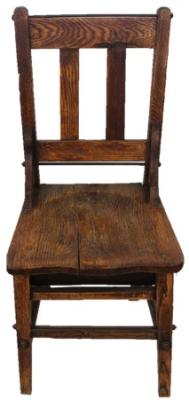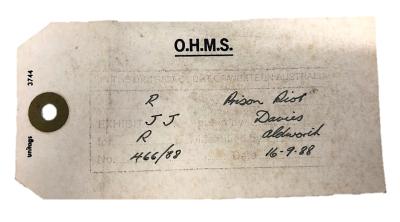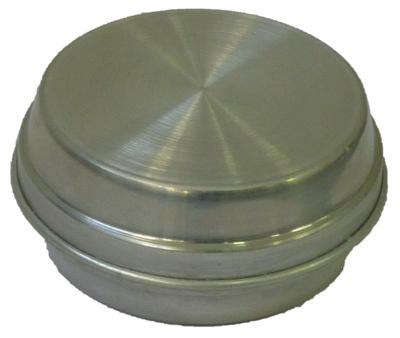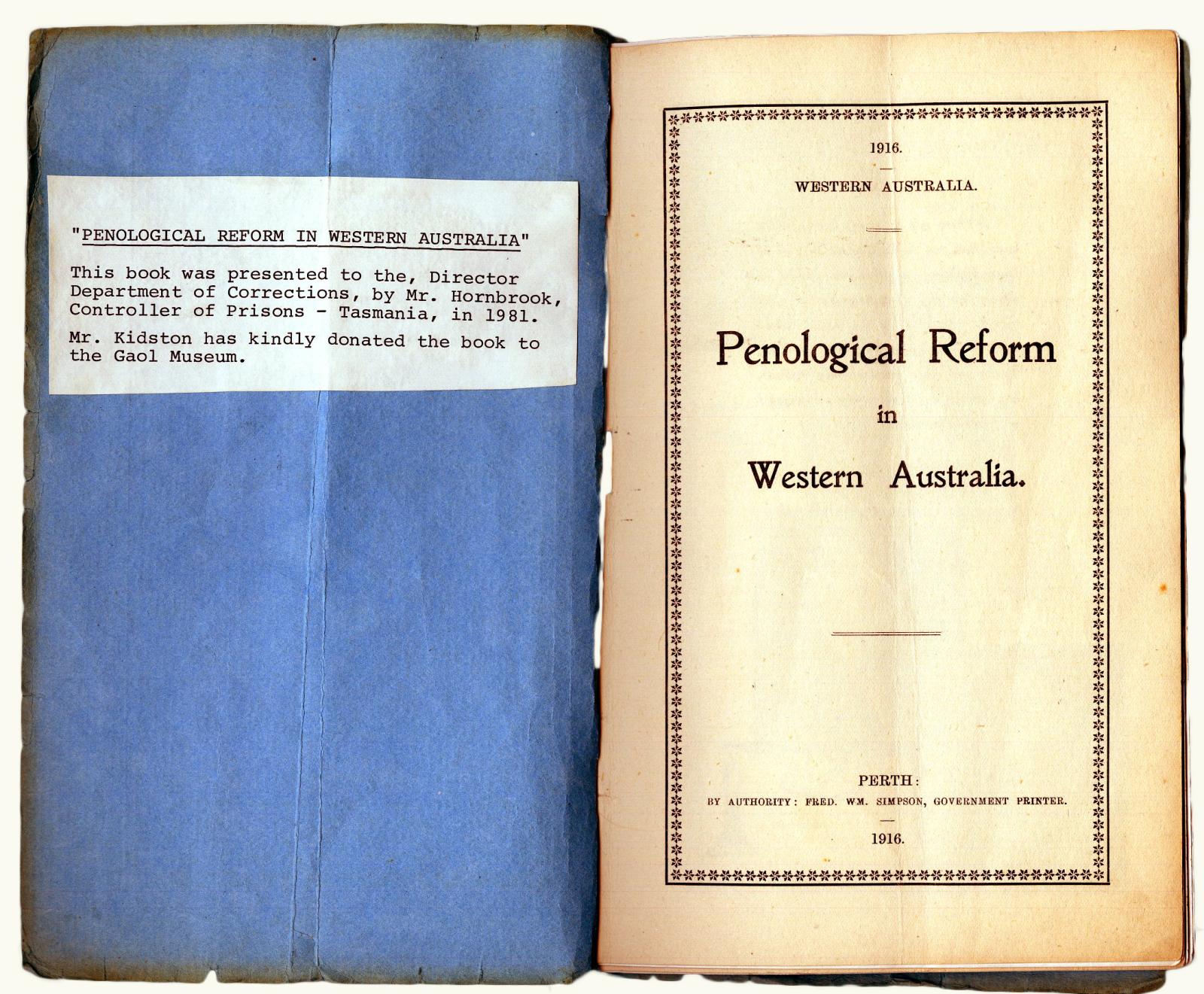PENOLOGICAL REFORM BOOKLET
1916Small, rectangular, paper booklet, titled 'Penological Reform'. Small book of 20 pages, with a blue card front cover. Printed on the front cover in black ink, within a decorative boarder, is, '1916/ WESTERN AUSTRALIA./ Penological Reform/ in / Western Australia / --- / Perth/ by authority of Fred WM Simpson, Government Printer / 1916'. The inside 20 pages are printed in black on white paper and bound by metal staples between cover of pale blue card. Some black and white photographic illustrations within, depicting Fremantle Prison. The booklet contains an in-depth analysis of the prison system in Western Australia with many references to Fremantle Prison specifically. Attached to the inside cover is a label of white paper printed in back, reading ' 'PENEOLOGICAL REFORM IN WESTERN AUSTRALIA'/ This book was presented to the, Director / Department of Corrections, by Mr Hornbrook,/ Comptroller of Prisons - Tasmania, in 1981./ Mr Kidston has kindly donated the book to / the Gaol Museum.'
Provenanced to the original Fremantle Prison Museum. A typed note on the inside cover of this booklet states, “This book was presented to the Director Department of Corrections, by Mr. Hornbrook, Comptroller of Prisons - Tasmania, in 1981. Mr. Kidston has kindly donated the book to the Gaol Museum”. This book deals with some of the findings of the 1911 Royal Commission.
Details
Details
Prisons serve four main functions in society; to punish offenders, protect the community from criminals, act as a disincentive to people considering crime and provide prisoners the opportunity to reform before their release back into the community.
Fremantle Prison, whilst a place of harsh punishment, also provided prisoners with positive opportunities such as education, religious observation, technical training and trade apprenticeships. Imprisonment during the convict era in Western Australia is usually associated with severe forms of punishment, such as floggings, the use of leg irons, and solitary confinement. Although the system was designed to punish criminals, the ultimate aim of convict transportation to Australia was colonisation. Ex-convicts were expected to become productive citizens of the new colony.
Successive Fremantle Prison administrators, like Comptroller-General Edmund Henderson and Superintendent Thomas Dixon, believed in the capacity of convicts to reform. They introduced reformative measures into the Prison system to help convicts make the transition from prisoner to free citizen.
By the late 1890s Fremantle Prison reversed its efforts to reform prisoners. The progressive policies of Henderson and Dixon were overturned by subsequent administrators who reinstated a prison system that emphasized punishment over reform. When subsequent Royal Commissions examined the prison system in 1899 and 1911, both were highly critical of the treatment of inmates at Fremantle Prison.
Little changed until the appointment of Superintendent Hugh Hann in 1912 who arrived with an agenda to modernise the Prison. Hann had visible Prison markings removed from uniforms and ordered ties, hairbrushes, hand mirrors and razors to be issued to the inmates. In 1915 the prisoners ate Christmas dinner together in the Main Cell Block, eating off a plate with a knife and fork for the first time. For the first time prisoners were also allowed to elect representatives from amongst themselves to form a Prisoner Committee. This ten member group negotiated with administration to improve conditions and assisted in the maintenance of discipline.
Between 1920 and 1950 Fremantle Prison had no formalised education program, and juvenile offenders were kept occupied during the day by stuffing mattresses in the Juvenile Reformatory. In 1950 the Education and Prisons Departments employed a full-time teacher to run a Prison schoolroom. Attendance was compulsory for prisoners under 20 years of age and voluntary for the remainder of the inmate population. The curriculum included maths, English, history, geography and civics.
After the 1950s the Prison developed extensive opportunities for prisoners to work and learn trades. Prisoners were engaged in carpentry, metalwork, automotive repairs, bookbinding, printing, painting, tailoring, and making boots and helmets. Prisoners also made cement products such as concrete slabs, worked in the kitchens, the boiler room and in the gardens.
This booklet, titled Penological Reform in Western Australia, was written by the authority of Fred WM Simpson at the Government Printer in 1916. It contains 20 pages of in-depth analysis of the prison system in Western Australia, with specific references to Fremantle Prison and the 1911 Royal Commission into prison standards. A typed note on the inside cover of this booklet states, “This book was presented to the Director Department of Corrections, by Mr. Hornbrook, Comptroller of Prisons - Tasmania, in 1981. Mr. Kidston has kindly donated the book to the Gaol Museum”.
